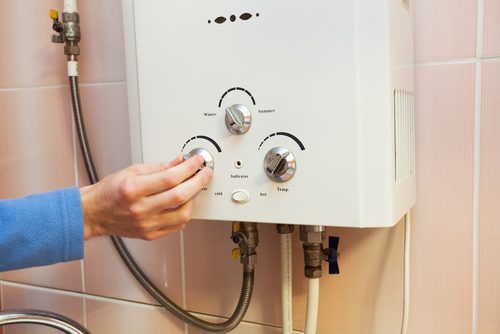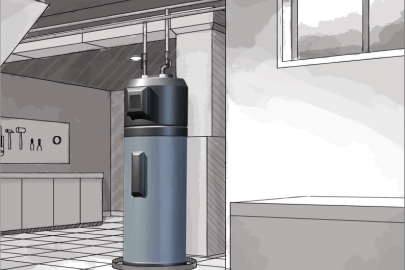How do you really feel in regards to Tips on Maintaining a Water Heater?

Warm water is crucial for daily comfort, whether it's for a revitalizing shower or washing dishes. To ensure your hot water system runs effectively and lasts longer, normal maintenance is key. This short article gives practical pointers and understandings on how to maintain your home's warm water system to stay clear of interruptions and costly repair work.
Introduction
Preserving your home's hot water system may seem complicated, however with a couple of easy actions, you can guarantee it operates efficiently for many years to find. This overview covers everything from recognizing your warm water system to do it yourself maintenance tips and recognizing when to employ expert aid.
Value of Maintaining Your Warm Water System
Routine upkeep not just prolongs the life-span of your hot water system yet also guarantees it operates successfully. Ignoring maintenance can lead to lowered performance, greater energy bills, and even early failure of the system.
Signs Your Warm Water System Requirements Upkeep
Understanding when your warm water system needs focus can protect against major problems. Look out for indications such as irregular water temperature level, unusual sounds from the heater, or rustic water.
Understanding Your Hot Water System
Prior to diving into upkeep tasks, it's handy to recognize the fundamental components of your warm water system. Typically, this consists of the water heater itself, pipes, anode poles, and temperature level controls.
Monthly Upkeep Tasks
Normal month-to-month checks can assist capture minor issues prior to they rise.
Purging the Water Heater
Flushing your hot water heater removes debris accumulation, boosting effectiveness and extending its life.
Monitoring and Changing Anode Rods
Anode rods stop rust inside the tank. Evaluating and replacing them when worn is important.
Evaluating and Adjusting Temperature Settings
Readjusting the temperature level setups makes sure ideal efficiency and safety.
DIY Tips for Upkeep
You can perform numerous maintenance jobs on your own to keep your warm water system in leading condition.
Looking for Leakages
Consistently evaluate pipes and connections for leakages, as these can cause water damage and greater costs.
Evaluating Stress Alleviation Valves
Testing the pressure relief valve ensures it functions properly and stops too much stress accumulation.
Insulating Pipes
Shielding warm water pipelines decreases warmth loss and can save power.
When to Call an Expert
While do it yourself upkeep is valuable, some concerns call for specialist experience.
Facility Concerns Requiring Expert Assistance
Instances consist of significant leakages, electric problems, or if your hot water heater is consistently underperforming.
Routine Professional Maintenance Benefits
Expert upkeep can include comprehensive examinations, tune-ups, and guaranteeing compliance with safety and security criteria.
Final thought
Normal maintenance of your home's hot water system is crucial for effectiveness, longevity, and expense savings. By adhering to these suggestions and recognizing when to seek professional aid, you can make sure a dependable supply of warm water without unforeseen disruptions.
Water Heater Maintenance Tips
Test the TPR Valve
- Shut off the power and the cold-water supply valve.
- Place a bucket under the pipe connected to the temperature-pressure-release (TPR) valve on the top or side of the tank. (This valve opens if the tank pressure gets too high.)
- Lift the valve’s tab to let some water out, then let go. If water keeps flowing, drain the tank partway, unscrew the old valve with a pipe wrench, and install a new one.
Check the Anode Rod
- Put a hose to the tank’s drain cock and let out a few gallons of water.
- Now fit a 1 1/16-inch socket onto the rod’s hex head on top of the heater (or under its top plate) and unscrew the rod. If it’s less than ½ inch thick or coated with calcium, buy a new one, wrap its threads with Teflon tape, put it back in the tank, and tighten securely. Use this segmented rod if headroom above the tank is limited.
Drain the Tank and Wash Out Sediment
- Drain the remaining water in the tank into the bucket, then stir up the sediment on the tank’s bottom by briefly opening the cold-water supply valve. Drain and repeat until clean water comes out of the hose.
- Close the drain cock, refill the tank, and turn its power back on.
Adjust the Temperature
- Find the temperature dial on the side of the tank and unscrew its cover. Adjust the dial to 120 degrees using a flathead screwdriver. For every 10 degrees the temperature is lowered, you can expect to save up to 5 percent in energy costs.
- Turn the water heater off or the thermostat down to its lowest setting if you plan to be away from home for more than three days.
Insulate the Pipes
- Buy some self-sticking 3/8-inch-thick foam pipe insulation that matches the pipes’ diameter.
- Slide the foam over the hot-and cold-water pipes as far as you can reach. Insulating the cold-water pipe prevents condensation in summer.
- Peel the tape and squeeze the insulation closed. If the pipe is 6 inches or less from the flue, cover it with 1-inch-thick unfaced fiberglass pipe wrap.
https://www.thisoldhouse.com/plumbing/21016402/how-to-maintain-a-water-heater

I ran across that entry on Tips For Maintaining Your Hot Water Heater while scouting around the web. Appreciated our post? Please quickly share it. Help another person find it. I recognize the value of reading our article about Tips For Maintaining Your Hot Water Heater.
Visit My Site
Comments on “Maintaining Your Home's Hot Water System: Essential Guidelines”